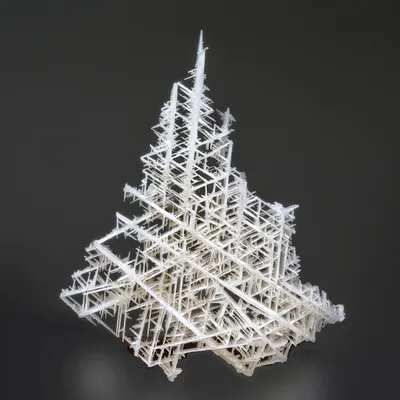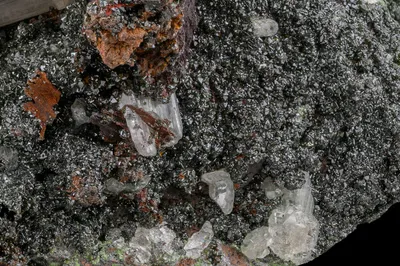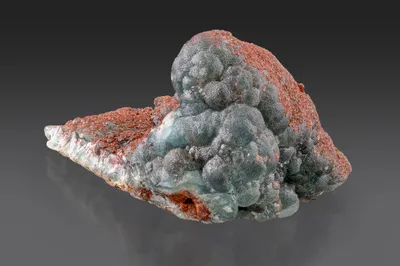Mineral Species
Chrysocolla
Type Locality
No
Composition
(Cu,Al)2H2Si2O5(OH)4·nH2O
Crystal System
Orthorhombic
Status at Tsumeb
Confirmed
Abundance
Very rare
Distribution
First oxidation zone
Paragenesis
Supergene
Entry Number
Species; TSNB82
General Notes
From an historical perspective it is interesting to note that "chrysocolla" was one of only two named minerals featured in the letter sent by Mathew Rogers to his board of directors, dated 21 January 1893; the other was quartz. Ironically, neither mineral is particularly common at Tsumeb, and it is reasonable to assume that Rogers used "chrysocolla" sensu lato in describing the appearance of the "Green Hill" outcrop.
Klein (1938) considered chrysocolla a "great rarity" at Tsumeb, while Burg (1942) indicated its occurrence only to a depth of 100 m (i.e. between the surface and 4 Level).
Strunz et al. (1958a) included chrysocolla in their lists of minerals for both the first and second oxidation zones.
Strunz and Tennyson (1967) noted that chrysocolla is rare in the first oxidation zone; they also included it in their inventory of second oxidation zone minerals and noted that it is usually "X-ray amorphous".
Bartelke (1976) noted the occurrence of chrysocolla as light green to sky-blue botryoidal masses and crusts, a description repeated by Pinch and Wilson (1977) who added that it is "… found only rarely" and that "… some masses have a high quartz content".
Keller (1984) stated that chrysocolla is not common at Tsumeb, but that it was found with other secondary minerals in the first oxidation zone.
Lombaard et al. (1986) listed chrysocolla as rare and sparsely distributed.
Gebhard (1999), however, noted that chrysocolla is found "sparingly throughout the deposit".
Krahn (2010) listed chrysocolla as an early-formed mineral in a first oxidation zone paragenesis comprising other silicate minerals willemite and hemimorphite, rosasite, conichalcite/duftite and philipsburgite.
Associated Minerals
azurite; cerussite; conichalcite; dioptase; duftite; hemimorphite; philipsburgite; quartz; rosasite; tangeite (?); willemite
Pseudomorphs
Chrysocolla is reported to form pseudomorphs after the following minerals: azurite (rare).





